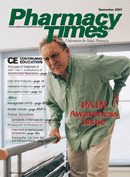Publication
Article
Pharmacy Times
Are We Speaking the Same Language?
Author(s):
Dr. Gaunt is a medication safety analyst and the editor of ISMP Medication Safety Alert! Community/Ambulatory Care Edition.
The Problem
Many people, even health care professionals,have trouble functioning well aspatients?whether limited by knowledge,emotional or clinical state, socioeconomicfactors, cultural background, orlanguage differences. The televisionshow ER portrayed this problem in anepisode in which a Spanish-speaking womanmisunderstood the directions fortaking isoniazid (INH). The prescriptionlabel stated to take the medication?once? daily. In the Spanish language,however, ?once? means ?eleven.? In theshow, the patient died from taking suchan excessive dose.
A similar, real-life problem occurredwhen a Spanish-speaking mother appliedoxiconazole 1% cream (Oxistat) toher baby?s inflamed rash up to 11 timeseach day. The mother was simply followingprescription label directions that stated,half in English and half in Spanish,?Aplicarse once cada dia til rash is clear.?The problem is that ?once? means?eleven? in Spanish. Fortunately, this wasa topical medication, and while theinflammation got worse, no permanentharm resulted. Had this been an oralmedication, however, the outcome couldhave been much more serious.
When a pediatric patient withseizures was discharged from the hospital,the physician wrote the followingprescription: ?phenytoin suspension 30mg/5 mL, take 5.8 cc three times aday.? Since the patient and his familyspoke only Spanish, the nurse gave thepatient?s mother the written prescriptionand an oral syringe marked withtape at the 5.8 mL mark. Becausephenytoin suspension is no longercommercially available in the 30 mg/5mL concentration, however, the pharmacywhere the mother took the prescriptionfilled it with phenytoin 125mg/5 mL. The prescription was labeledcorrectly and stated that the patientwas to be given 1.3 mL 3 times a day.The pharmacist, who did not speakSpanish, could not counsel the patient?smother. As a result, the motherused the syringe the nurse had givenher, and she administered 145 mg 3times a day instead of 34.8 mg 3 timesa day. A few days later, the patient wasreadmitted to the hospital intensivecare unit nearly comatose with phenytointoxicity. The child recovered andwas discharged.
In another example, a physician prescribed?Amoxicillin 200 mg/5 mL? withinstructions to administer 5 mL tid to a3-year-old child. The pharmacy carriedonly a 250 mg/5 mL strength, so thepharmacist changed the directions to?Take 4 cc (4/5 teaspoonful) by mouth3 times a day.? The child?s father misunderstoodthe directions, as Englishwas his second language. He did notknow what ?cc? meant, but upon seeing?4/5 teaspoonful,? he thought heshould give his child 4.5 teaspoons ofthe medication. After 5 doses, hebrought his child to the emergencydepartment with severe diarrhea. Theuse of 2 abbreviations??cc? and aslash mark (/)?contributed to theerror. The child?s father did not interpreteither abbreviation as intended.Inadequate patient counseling alsoplayed a role. Although he had beengiven a 10 mL measuring device fororal solutions marked in mL and teaspoons,specific directions for measuringeach dose were not reviewed withthe father when he picked up the prescription.
Safe Practice Recommendations
Patient counseling is always important,especially if a pharmacist mustuse a different concentration of a drugthan originally prescribed because thedirections that the physician initiallyprovided to the patient differed fromthe actual directions on the prescriptionlabel. If the patient?or the family,in the case of a pediatric patient?doesnot speak English, however, it is a difficultsituation. If you have a lot ofpatients who speak another language,consider having patient informationbrochures already translated into thatlanguage. While oral and writteninstructions are definitely preferred, forthose patients who speak other languageswritten brochures may be theonly way to provide counseling.







